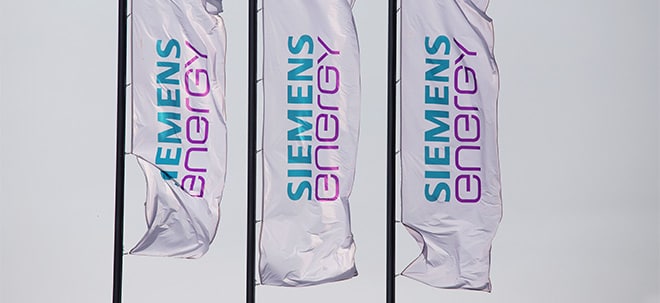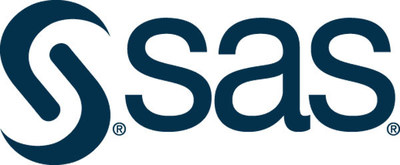Survey: 78% of insurance execs say closing $1.8 trillion protection gap is an ethical obligation
More than 500 insurance leaders weigh in on risks, opportunities and trends to watch through 2040
CARY, N.C., Feb. 25, 2025 /PRNewswire/ -- The global protection gap – the difference between insured and uninsured losses across life, health, natural catastrophe and crop insurance – was last estimated at $1.8 trillion. A new "future of insurance" survey of more than 500 insurance executives from 17 countries by Economist Impact and data and AI leader SAS reveals that 78% believe that the industry has "an ethical obligation" to close the protection gap.
"The future belongs to those who harness innovation to make insurance not just more accessible but more equitable."Furthermore, surveyed executives primarily see technology as the most effective avenue for their organizations to address the protection gap. And as losses to insurers from climate change mount, three in four (76%) consider closing the protection gap a "significant" business opportunity.
Revealing the paths to 2040: a global industry survey report, which is complemented by a data dashboard, examines the risks, opportunities and trends insurance leaders believe will shape the insurance industry in years ahead. Alongside the global protection gap, these trends include the climate emergency, data and AI innovation, and rising fraud and cybersecurity risks.
Experts from The World Economic Forum, The Geneva Association, Economist Impact and SAS will explore the research in depth in a webinar on March 6. Register to attend Four Futures of Insurance: Strategic Insights from Economist Impact Research, streaming live at 11 a.m. EST and available later on demand.
"Insurance has always been about building resilience, and today, the stakes have never been higher," said Sabine VanderLinden, CEO and co-founder of Alchemy Crew. "With a $1.8 trillion global protection gap and mounting challenges, from climate change to fraud and cyber threats, the industry stands at a crossroads."
A widening divide
In 2024, increasingly catastrophic fires, flooding, storms and earthquakes cost $368 billion in global economic losses; 60% of those losses were uninsured. In the property and casualty sector, this primarily stems from vulnerable communities, often in high-risk markets, where the effects of climate change make buying insurance difficult to afford or impossible to purchase altogether.
The protection gap also includes fiscal losses to historically underserved populations in health and life insurance, which will grow as climate change continues to unfold. Extreme heat and cold, for instance, are projected to particularly harm and kill children, the elderly and the socioeconomically disadvantaged. Improving access and offering affordable coverage to underserved markets will be imperative as health and life insurers adapt to worsening climate risk.
"As financial first responders, insurance leaders understand that shifting from detecting and repairing after catastrophe to predicting and preventing is critical to addressing increasing climate risk and insurance affordability challenges at hand," said Sean Kevelighan, CEO of the Insurance Information Institute.
"What's more, finding ways to incentivize this shift in behaviors and mindsets amongst our customers and communities will reduce risk levels as well as the protection gap."
What barriers prevent action?
Insurance executives regard the following as top internal barriers that "significantly/very much" limit their organization's ability to take advantage of industry trends:
"Three-quarters [77%] of insurance leaders identify lack of trust in the industry as a significant barrier to closing the protection gap, and it's no wonder why," said Franklin Manchester, Principal Global Insurance Advisor at SAS. "As carriers retreat from disaster-prone areas and data privacy violations are revealed, insurers must act decisively to regain consumer and regulator confidence.
"Full data transparency and investment in responsible innovation would be a significant step forward to reputation and brand reform – one of the top three outcomes the surveyed execs report could come from closing the protection gap."
Tech paves a path to closing the protection gap
Surveyed execs were asked to identify the avenues they believe would help their organizations most effectively target the global protection gap. Three of the four most popular methods involve technology, including:
- Using technologies to make insurance products more affordable (48%); 40% of the respondents' organizations are currently deploying.
- Developing innovative insurance products like parametric or microinsurance (42%); currently in action at 40% of respondents' organizations.
- Engaging with regulators via insurance organizations (38%); 28% of the respondents' organizations are currently undertaking.
- Leveraging data to better assess risks and design products (39%); 32% of the respondents' organizations are working on.
"The future belongs to those who harness innovation – AI, data and emerging frontier technologies – to make insurance not just more accessible but more equitable," added VanderLinden. "The industry must certainly cover risks. It also must empower communities, create trust and bridge the divide for a more secure tomorrow."
Moving #InsuranceForward
Explore the study's findings with an interactive experience at SAS.com/insuranceforward.
About Economist Impact
Economist Impact combines the rigor of a think-tank with the creativity of a media brand to engage a globally influential audience. We partner with corporations, foundations, NGOs and governments across big themes including sustainability, health and the changing shape of globalization to catalyze change and enable progress.
We bring a 75-year track record of evidence-based policy research across 205 countries. Our global team sheds light on policy choices through benchmarks, economic and social impact analysis, white papers, forecasting and scenario modeling.
About SAS
SAS is a global leader in data and AI. With SAS software and industry-specific solutions, organizations transform data into trusted decisions. SAS gives you THE POWER TO KNOW®.
SAS and all other SAS Institute Inc. product or service names are registered trademarks or trademarks of SAS Institute Inc. in the USA and other countries. ® indicates USA registration. Other brand and product names are trademarks of their respective companies. Copyright © 2025 SAS Institute Inc. All rights reserved.
Editorial Contact:
Julia Norton
julia.norton@sas.com
919-531-4661
www.sas.com/news
Danielle Bates
danielle.bates@sas.com
919-531-1959
![]() View original content to download multimedia:https://www.prnewswire.com/news-releases/survey-78-of-insurance-execs-say-closing-1-8-trillion-protection-gap-is-an-ethical-obligation-302384854.html
View original content to download multimedia:https://www.prnewswire.com/news-releases/survey-78-of-insurance-execs-say-closing-1-8-trillion-protection-gap-is-an-ethical-obligation-302384854.html
SOURCE SAS



